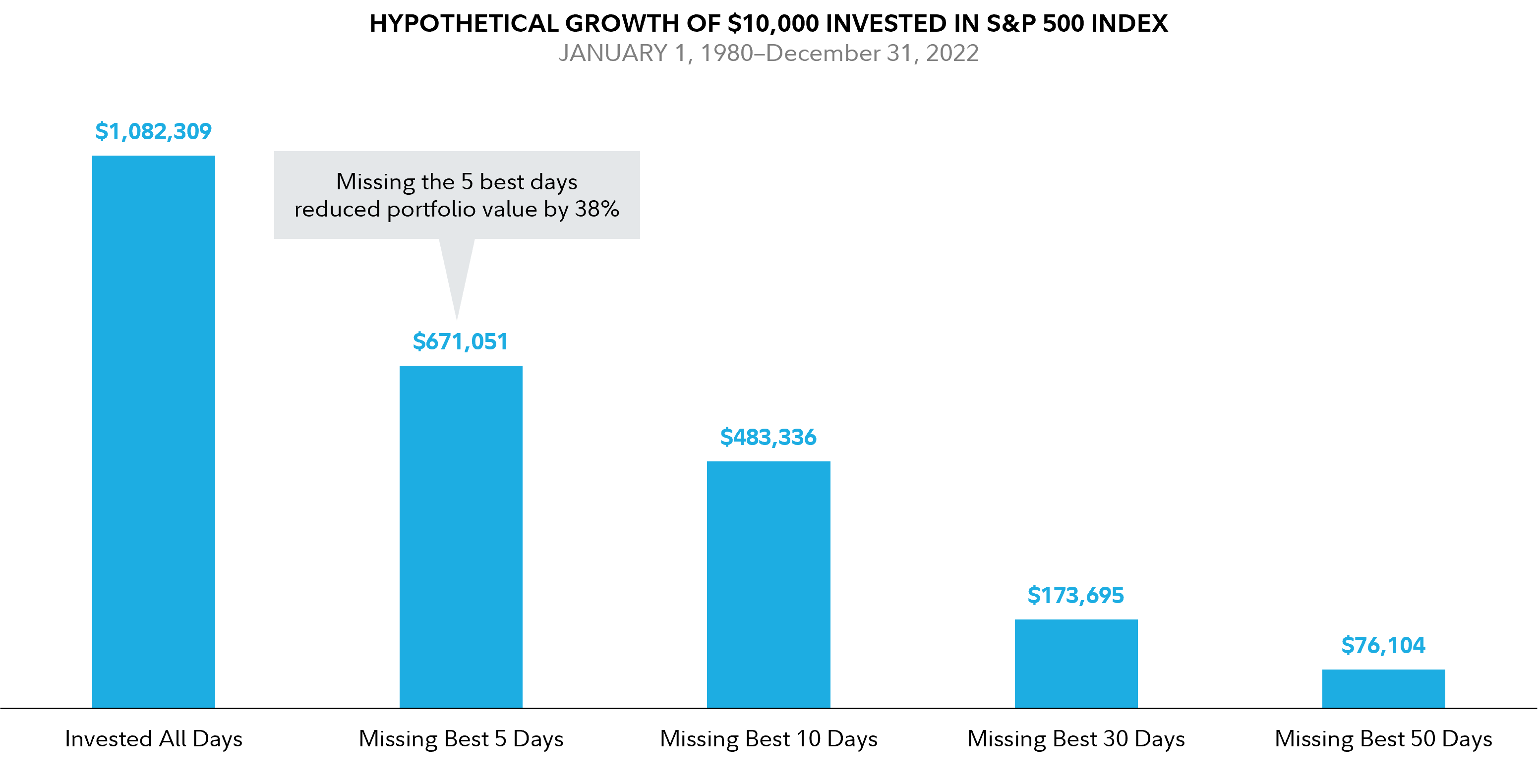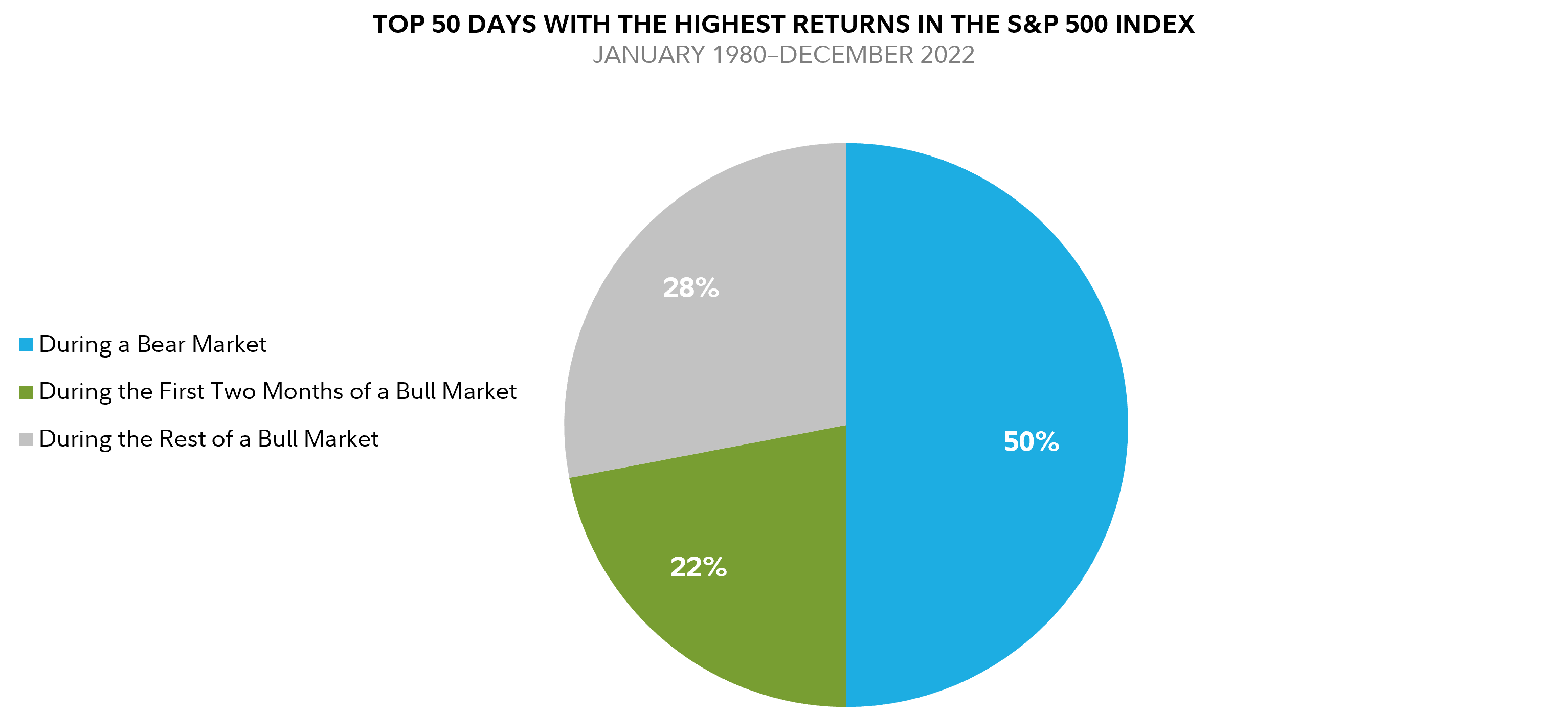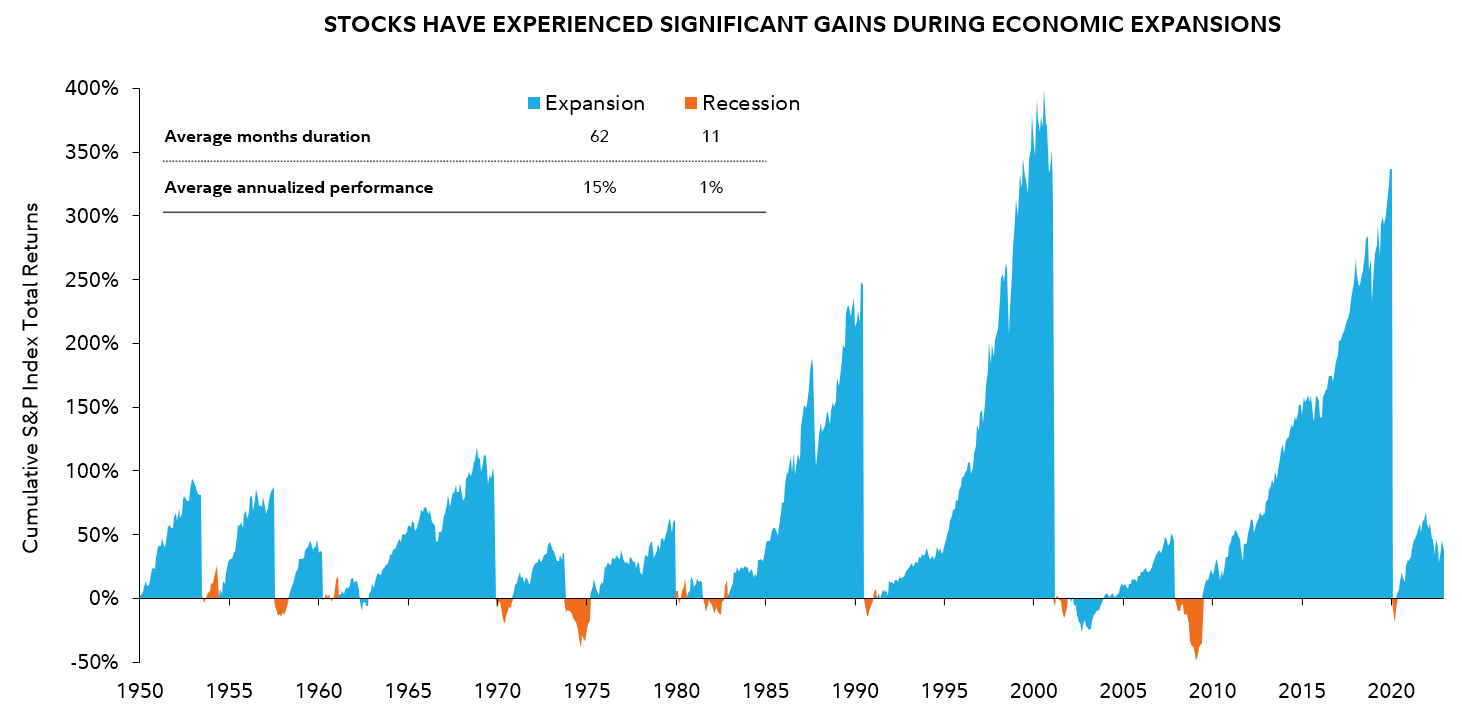The case for staying investedMissing a handful of the market's best days can significantly reduce investment returns. |
When markets fall, it's natural to feel stressed. In fact, in times of market volatility, some investors may be tempted to pull their money out of the market entirely. However, not being invested can come with its own set of risks, particularly if markets rebound.
For example, an investment of $10,000 in the S&P 500® Index in 1980 would have grown to a value of $1,082,309 by 2022 – if that portfolio had remained invested. Yet, missing out on even a handful of the best days over that period would have greatly reduced the portfolio's value.

Past performance is not a guarantee of future results. The hypothetical example assumes an investment that tracks the returns of a S&P 500® index and includes dividend reinvestment but does not reflect the impact of taxes, which would lower these figures. “Best days” were determined by using the one-day total returns for the S&P index within this time period and ranking them from highest to lowest. There is volatility in the market and a sale at any point in time could result in a gain or loss. Your own investment experience will differ, including the possibility of losing money. Source: Fidelity, Asset Allocation Research Team, as of 12/31/22.

Past performance is no guarantee of future results. Measures the 50 best one-day returns of the S&P 500 index from 1/1/1980–12/31/2022, as of 12/31/2022. A bear market is defined as a 20% drop in the S&P from a previous high.
We're here to help you through challenges when market volatility occurs. Backed by deep research and experience, we remain patient and disciplined through periods of market distress. By taking a long-term view, investors who stay invested may have a better chance of reaching their financial goals.
As shown below, significant gains in the stock market have often occurred following some steep declines. Investors who abandon their strategy during a market downturn may miss out on those gains. By taking a long-term view, investors who stay invested may have a better chance of reaching their financial goals.

Past performance is no guarantee of future results. This chart illustrates the cumulative percentage return of a hypothetical investment made in the S&P 500 index during periods of economic expansion and recession. Index returns include reinvestment of capital gains and dividends, if any, but do not reflect any fees or expenses. This chart is not intended to imply any future performance of an investment product. It is not possible to invest directly in an index. All indexes are unmanaged. Please see disclosures for index definitions. Source: Bloomberg, S&P 500 index total annual return, 1/1/1950–12/31/2022; recession and expansion dates defined by the National Bureau of Economic Research (NBER).
We're here to help you through challenges when market volatility occurs. Backed by deep research and experience, we remain patient and disciplined through periods of market distress.
